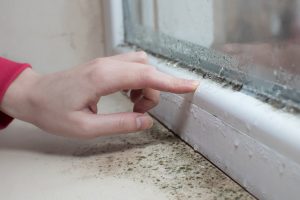History of Asbestos in Wallpaper

Origins of Asbestos Use in Decorative Materials
In the late 19th century, asbestos became a popular material in construction due to its fire-resistant and durable properties. It wasn’t just used in industrial settings—it found its way into decorative materials, including wallpaper. Manufacturers saw the mineral as a way to make wallpaper safer and longer-lasting, especially in homes prone to fire hazards. Asbestos was often added to the paper backing to act as a fire retardant, which was a key selling point at the time.
Key Timeframes for Asbestos in Wallpaper
The widespread use of asbestos in wallpaper spanned several decades, primarily between the 1930s and 1980s. During this period, vinyl-coated wallpaper—favored for its moisture resistance in kitchens and bathrooms—frequently contained asbestos. By the late 1980s, however, growing awareness of asbestos-related health risks led to stricter regulations, and its use declined significantly. Homes built or renovated before 1980 are most likely to feature wallpaper with asbestos content.
Why Asbestos Was Added to Wallpaper
Asbestos wasn’t just a random addition; it served specific purposes. Manufacturers included it in wallpaper to:
- Enhance fire resistance, reducing the risk of household fires spreading.
- Improve durability, making the wallpaper less prone to wear and tear.
- Increase sound absorption, which was marketed as a way to create quieter indoor spaces.
These benefits made asbestos-containing wallpaper an attractive choice for homeowners, despite the now-known health risks. Manufacturers like Armstrong and GAF Corporation were some of the big names producing such materials during the mid-20th century. Unfortunately, the long-term health consequences of asbestos exposure were not fully understood until decades later.
Health Risks Associated With Asbestos in Wallpaper
Respiratory Conditions Linked to Asbestos Exposure
Breathing in asbestos fibers can lead to severe health issues over time. Conditions like asbestosis, mesothelioma, and lung cancer are directly tied to asbestos exposure. These tiny fibers, once inhaled, embed themselves in lung tissues, causing inflammation and scarring. Over the years, this damage can progress into life-threatening diseases. For those living in homes with old wallpaper, especially pre-1980s, the risk increases if the material becomes damaged or disturbed.
How Asbestos Fibers Become Airborne
Asbestos fibers are not easily visible, making them even more dangerous. When wallpaper containing asbestos starts to degrade—such as peeling, crumbling, or being sanded—the fibers can break free and float in the air. Activities like removing or cutting the wallpaper without proper precautions can release these fibers. Even something as simple as brushing against old wallpaper in a high-traffic area can cause exposure. It’s vital to treat any suspect wallpaper as hazardous until confirmed otherwise.
Long-Term Effects of Asbestos Exposure
The long-term impact of inhaling asbestos fibers is severe and often irreversible. Diseases like mesothelioma may take decades to develop, meaning exposure today could lead to health issues much later in life. Chronic conditions such as asbestosis cause persistent breathing difficulties, while lung cancer linked to asbestos exposure remains a major concern. Protecting yourself from exposure is critical, as these diseases often have no cure and significantly affect quality of life. If you suspect asbestos in your home, consulting a professional for testing and advice is essential.
Identifying Asbestos in Wallpaper and Decorative Materials
Visual Indicators of Asbestos in Wallpaper
Identifying asbestos in wallpaper isn’t always straightforward, but there are a few telltale signs to watch out for. Wallpaper installed between 1930 and 1980 is more likely to contain asbestos, particularly if it has a vinyl or cloth backing. Look for these characteristics:
- A vinyl or plastic-like coating with a fibrous paper backing.
- Labels or markings indicating the wallpaper was manufactured during the mid-20th century.
- Areas where the wallpaper has curled, cracked, or become brittle over time.
If you’re unsure about the wallpaper’s composition, it’s safest to assume it may contain asbestos until proven otherwise.
Testing Methods for Asbestos in Decorative Materials
The most reliable way to confirm the presence of asbestos is through professional testing. Here are some common methods:
- Collecting a small sample and sending it to a certified lab for analysis.
- Using an at-home test kit, such as the PRO-LAB Asbestos Test Kit, to identify asbestos in materials like wallpaper, ceiling tiles, or flooring.
- Hiring a certified asbestos inspector to conduct a thorough evaluation of your home.
While DIY options exist, professional testing is generally recommended for accurate results and safety.
When to Consult a Professional
If you suspect asbestos in your wallpaper or decorative materials, consulting a professional is often the best course of action. This is particularly important in the following cases:
- Your home was built before 1980, and the wallpaper shows signs of wear or damage.
- You’re planning renovations that could disturb the wallpaper and release asbestos fibers.
- You lack the proper safety equipment or experience to handle asbestos safely.
Professionals can not only identify asbestos but also guide you on the safest way to address the issue, whether through encapsulation or removal.
Common Types of Wallpaper Containing Asbestos
Vinyl-Coated Wallpaper and Asbestos
Vinyl-coated wallpaper was a popular choice in homes built between the 1930s and 1980s. Its durability and resistance to moisture made it a go-to option for kitchens and bathrooms. However, many of these wallpapers contained asbestos, which was added to improve fire resistance and strengthen the material. This type often has a plastic-like surface with a fibrous paper backing. If your home was built during this period, it’s worth considering the potential risks.
Anaglypta Wallpaper and Its Risks
Anaglypta wallpaper, known for its textured patterns, was another type that sometimes contained asbestos. These wallpapers were often used to add decorative flair to living spaces. The asbestos was typically embedded in the paper backing, making it hard to detect visually. Due to its textured surface, removing Anaglypta wallpaper can disturb asbestos fibers, posing a significant health hazard if the material is not handled properly.
Other Decorative Materials With Asbestos
Aside from wallpaper, asbestos was also found in other decorative materials like ceiling tiles and wall panels. These materials were favored for their strength and fire-resistant properties. Asbestos vinyl materials, for instance, were commonly used in flooring and wall coverings, creating a uniform look throughout homes. If you suspect asbestos in such materials, professional testing is essential to confirm its presence before any renovation or removal.
Safe Practices for Removing Asbestos-Containing Wallpaper
Protective Gear for Asbestos Removal
When working with materials that may contain asbestos, wearing the right protective gear is not optional—it’s a necessity. A proper respirator is critical to avoid inhaling harmful fibers. Disposable coveralls, gloves, and safety goggles should also be part of your outfit. Make sure all gear is labeled for asbestos use to ensure it provides adequate protection. After the job, discard disposable items carefully to avoid contamination.
Steps to Minimize Fiber Release
Removing asbestos-containing wallpaper requires meticulous care to prevent fibers from becoming airborne. Follow these steps:
- Seal off the area: Use plastic sheeting and duct tape to isolate the workspace. Turn off any HVAC systems to prevent fibers from circulating.
- Wet the wallpaper: Dampen the wallpaper thoroughly before attempting to remove it. Wet fibers are less likely to become airborne.
- Remove slowly: Peel the wallpaper gently to avoid tearing, which can release fibers. Use a scraper carefully, and re-wet the surface as needed.
Disposal Guidelines for Asbestos Materials
Proper disposal is just as important as safe removal. Place all waste, including wallpaper and protective gear, in sealed, labeled bags. Check your local regulations for disposal sites that accept asbestos-containing materials. Never throw these items in regular trash bins, as this can pose a risk to others.
Regulations and Bans on Asbestos in Decorative Materials
Timeline of Asbestos Bans in the U.S.
The use of asbestos in decorative materials, including wallpaper, was widespread until the late 20th century. By the 1970s, growing awareness of its health risks led to major regulatory changes. In 1973, the Environmental Protection Agency (EPA) banned spray-applied asbestos-containing materials for fireproofing and insulation. This was followed by a 1989 ruling under the Toxic Substances Control Act, which aimed to phase out most asbestos-containing products. However, parts of this ban were overturned in 1991, leaving some asbestos uses still legal. Today, asbestos is heavily regulated but not entirely banned in the U.S.
Current Regulations for Asbestos in Homes
Modern regulations require that any remaining asbestos-containing products carry clear labeling to inform consumers of potential risks. Homeowners are advised to test materials in older homes, especially those built before 1980, for asbestos content. If asbestos is detected, federal guidelines mandate safe handling and disposal procedures. The EPA provides detailed information on asbestos sources and handling, ensuring homeowners and contractors are aware of the dangers and the necessary precautions.
International Standards on Asbestos Use
Globally, the approach to asbestos regulation varies widely. Many countries, including the European Union, Australia, and Canada, have implemented complete bans on asbestos use. In contrast, nations like the United States and India still allow limited applications under strict controls. These differences highlight the need for international cooperation and education to reduce asbestos exposure risks. For example, consumers should be aware that most modern products do not contain asbestos, but any that do must be clearly labeled to indicate potential hazards, as outlined in asbestos labeling requirements.
The Role of Professionals in Asbestos Abatement
Why Hire Certified Asbestos Abatement Experts
When it comes to asbestos removal, the stakes are incredibly high. Hiring certified asbestos abatement professionals is not just a recommendation—it’s a necessity. These experts are trained to handle asbestos safely, minimizing the risk of exposure to harmful fibers. Attempting to remove asbestos yourself can lead to accidental contamination, putting you and your household at risk for severe health conditions like mesothelioma and lung cancer. Certified contractors follow strict protocols, including sealing off work areas, using specialized equipment, and properly disposing of hazardous materials. Their expertise ensures the job is done right and safely.
Cost Implications of Professional Asbestos Removal
While professional asbestos removal might seem expensive upfront, it’s an investment in safety and peace of mind. The cost varies depending on the size of the area and the level of contamination, but the alternative—improper removal—can lead to significant long-term expenses. Health treatments, legal liabilities, and property devaluation are just a few of the potential consequences of cutting corners. Additionally, professional asbestos removal can enhance your property’s value, making it more attractive to potential buyers. This is especially important if you plan to sell your home in the future.
What to Expect During an Asbestos Abatement Process
Understanding the process can help ease any concerns you might have. Here’s what typically happens:
- Inspection and Testing: A professional will assess the area and test materials to confirm the presence of asbestos.
- Planning and Preparation: The team will create a detailed plan, including sealing off the area and setting up negative air pressure systems to prevent fiber spread.
- Removal: Using specialized tools and protective gear, the professionals will carefully remove asbestos-containing materials.
- Cleanup and Disposal: All materials are sealed and disposed of in compliance with local and federal regulations.
- Final Inspection: The area is re-tested to ensure it’s safe before being cleared for use.
By hiring professional asbestos abatement contractors, you not only protect your health but also ensure the removal process is efficient and compliant with all safety standards.
Preventing Asbestos Exposure During Home Renovations
Precautions for DIY Renovators
Renovating your home can be exciting, but if your house was built before the 1980s, you might be dealing with asbestos in wallpaper or other materials. Disturbing asbestos-containing materials without proper precautions can release harmful fibers into the air. If you’re planning a DIY renovation, consider these steps:
- Treat any wallpaper or decorative material installed before 1980 as if it contains asbestos.
- Avoid sanding, scraping, or tearing materials that could release asbestos fibers.
- Wear protective gear such as a respirator and disposable coveralls to reduce exposure.
Importance of Pre-Renovation Testing
Before starting any renovation project, it’s essential to confirm whether asbestos is present. Testing is the only reliable way to know for sure. Hire a professional to take samples, or consult a licensed lab for testing. This step is especially important for homes built between the 1930s and 1980s, where asbestos use was common. Skipping this step could put your health at risk.
How to Handle Suspected Asbestos Materials
If you suspect asbestos in your home, follow these guidelines to minimize exposure:
- Avoid disturbing the material. Asbestos is most dangerous when it’s airborne.
- Seal off the area using plastic sheeting to contain any potential fibers.
- Contact certified asbestos abatement professionals for removal and disposal. They have the expertise to handle the material safely.
Remember, the safest approach is to leave asbestos removal to experts. The cost may be higher, but it ensures your family’s safety and compliance with regulations. For example, in April 2022, the EPA proposed stricter bans on asbestos use to protect public health read more.
Alternatives to Asbestos-Containing Decorative Materials
Modern Wallpaper Options Without Asbestos
When it comes to updating your home’s decor, modern wallpaper options provide a safe and stylish alternative to asbestos-containing materials. Many manufacturers now produce wallpapers using non-toxic, eco-friendly materials that are free from harmful fibers. Look for options like:
- Paper-based wallpapers, which are lightweight and easy to apply.
- Fabric-backed vinyl wallpapers, offering durability without the risks of asbestos.
- Peel-and-stick wallpapers, a convenient and mess-free choice for temporary designs.
These options not only keep your home safe but also provide a wide range of designs, textures, and colors to suit any aesthetic.
Eco-Friendly Decorative Material Choices
For those looking to make environmentally conscious choices, there are several sustainable decorative materials available. These materials are not only safe but also contribute to reducing your carbon footprint. Consider:
- Bamboo charcoal wood veneer: A durable and renewable option that adds a natural touch to interiors.
- WPC (wood plastic composite) wall panels: A blend of wood and plastic, offering a sturdy yet eco-friendly alternative.
- PVC marble sheets: Lightweight and versatile, mimicking the look of real marble without the environmental impact.
These choices highlight the importance of combining safety with sustainability in modern home design.
Cost Comparisons of Safe Alternatives
Switching to asbestos-free materials doesn’t have to break the bank. While some eco-friendly options may have a slightly higher upfront cost, their long-term benefits often outweigh the expense. Here’s a quick breakdown:
- Paper-based wallpapers are among the most affordable, making them ideal for budget-conscious homeowners.
- Fabric-backed vinyl wallpapers offer a mid-range price point but come with added durability and ease of maintenance.
- High-end materials like bamboo veneers or WPC panels may cost more initially but provide lasting value and a unique aesthetic.
By weighing the costs against the benefits, homeowners can make informed decisions that prioritize both safety and style.
For homeowners involved in renovations, particularly in older buildings, it’s crucial to be aware of potential asbestos risks before choosing alternatives. Additionally, exploring eco-friendly decorative materials can ensure a safe and sustainable living environment.
The Legacy of Asbestos in Older Homes
Why Older Homes Are More Likely to Contain Asbestos
Older homes, particularly those built between 1930 and 1980, are often at risk of containing asbestos materials. During this era, asbestos was widely used in construction due to its fire-resistant and durable properties. It was incorporated into various materials, including insulation, flooring, and even decorative elements like wallpaper. This widespread use has left a lasting legacy of potential health hazards in older properties. Homeowners should be aware that even seemingly harmless features, such as textured walls or vinyl wallpaper, may harbor asbestos fibers.
Challenges in Renovating Historic Properties
Renovating older homes can be a delicate process. The presence of asbestos complicates efforts to modernize or restore these properties. For instance, removing old wallpaper or repairing damaged insulation can release harmful asbestos fibers into the air. Renovators must take extra precautions to avoid exposure. Some common challenges include:
- Identifying asbestos-containing materials, which may not always be visually obvious.
- Balancing historical preservation with the need to replace hazardous materials.
- Complying with local and federal regulations regarding asbestos removal and disposal.
Preserving Safety While Maintaining Aesthetics
For homeowners who value the charm of historic properties, maintaining aesthetics while ensuring safety is a top priority. This often means replacing original materials with modern, asbestos-free alternatives that mimic the look of the original design. Hiring professionals trained in asbestos abatement is essential to ensure that the process is both safe and respectful of the home’s character. Additionally, pre-renovation testing for asbestos can help homeowners plan their projects more effectively.
By taking these steps, homeowners can enjoy the unique beauty of older homes without compromising on safety.
The Science Behind Asbestos and Its Dangers
What Makes Asbestos Hazardous
Asbestos is a naturally occurring mineral composed of tiny, durable fibers. These fibers are resistant to heat, fire, and chemicals, which once made asbestos a popular material in construction and manufacturing. However, its microscopic fibers pose a serious health risk when disturbed. Once airborne, they can be inhaled and lodge deep within the lungs, causing long-term damage. The fibers’ durability, while advantageous in materials, makes them nearly impossible for the body to break down or remove.
How Asbestos Affects the Human Body
When asbestos fibers are inhaled, they can cause scarring and inflammation in lung tissue. Over time, this damage can lead to severe health issues, such as:
- Asbestosis: A chronic lung condition characterized by scarring that makes breathing difficult.
- Lung cancer: Prolonged exposure to asbestos significantly increases the risk.
- Mesothelioma: A rare but aggressive cancer affecting the lining of the lungs, abdomen, or heart.
These conditions often take years, even decades, to develop, meaning exposure risks might not be immediately apparent.
Scientific Advances in Asbestos Detection
Modern science has developed more precise methods for identifying asbestos in materials and the environment. These include:
- Polarized Light Microscopy (PLM): Used to identify asbestos fibers in bulk materials.
- Transmission Electron Microscopy (TEM): Offers higher magnification to detect smaller fibers.
- Air sampling techniques: These measure the concentration of asbestos fibers in the air, ensuring safety in workplaces and homes.
Scientific progress has also improved our understanding of asbestos-related diseases, leading to better diagnostic tools and treatments. However, prevention remains the most effective way to combat the dangers of asbestos. For those in construction or renovation, guidance for safely performing non-licensed work with asbestos is critical to minimizing exposure risks.
Raising Awareness About Asbestos in Decorative Materials
Educational Campaigns on Asbestos Risks
Public education is key to reducing the risks of asbestos exposure. Raising awareness about the dangers of asbestos in older decorative materials, including wallpaper, can save lives. Schools, community centers, and online platforms can host informational sessions to teach people how to identify and safely address potential asbestos-containing materials. Visual aids, like infographics, can simplify complex topics, making them more accessible to a broader audience.
Community Resources for Asbestos Safety
Local governments and environmental agencies often provide valuable resources for homeowners and renovators. These can include free or low-cost testing kits, lists of certified asbestos abatement professionals, and guidance on safe removal practices. Creating awareness about such resources ensures that individuals take the necessary precautions when dealing with older decorative materials.
The Role of Media in Highlighting Asbestos Issues
Media outlets, both traditional and digital, play a significant role in spreading information. News stories, social media campaigns, and documentaries can bring attention to the lingering dangers of asbestos. For instance, a well-crafted video or article about the risks of textured coatings, like Artex, can inform and empower individuals to take action. By leveraging media, the message reaches a wider audience, encouraging proactive safety measures.
Helpful Websites
Robert King Mesothelioma Law Services




